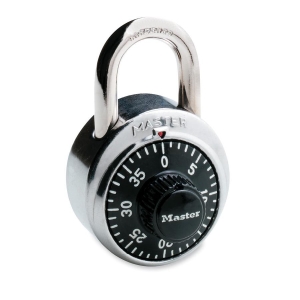
While I was at the gym a few weeks ago, a couple pretty silly thoughts came to me that I thought were interesting enough (at least to me) to jot down. Most gyms provide lockers for personal storage, sans the actual padlocks. As I turned and spun my trusty old Master Lock combination padlock, I realized that these padlocks are actually 97.5% less secure than they’re made out to be.
From what I can tell, the common padlocks used by most people are more or less the same. These Master Lock-style combination locks were also used for the hallway lockers I had during grade school. The locks have a combination of 3 numbers, and the sequence of actions required to unlock the lock are: spin the lock clockwise past the first number 3 times, spin the lock counter-clockwise past the second number 2 times, and finally spin the lock clockwise directly to the final number.
However, one trick I’ve learned over many years of using hallway lockers and gym lockers is that as you spin the lock towards the final number, you can simply pull down on the lock as if to open it. As you spin towards the final number, the lock will loosen and eventually open as you pass over the number. The final number in the combination is actually useless. I (and I’m sure many of my classmates and fellow gym-goers) have known this for a long time, but nonetheless this means that only 2 of the 3 numbers in a padlock combination are needed to open a lock. Thus, you only need to go through 402 = 1600 combinations in order to brute force a lock, as opposed to 403 = 64000 combinations.
Of course, there are better ways of cracking a padlock than a brute force approach. Nonetheless, the fact that there are 62,400 (97.5%) fewer combinations than “advertised” isn’t immediately apparent. Perhaps newer generations of Master Lock padlocks will do away with the “shortcut” mechanism for the final spin in the combination, but who knows. I would be both impressed and amused if I saw a guy hunched over my lock at the gym, crossing off numbers on a list as he worked his way through 1600 combinations.
Comments